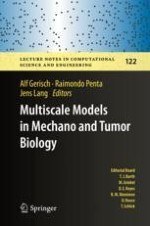This book presents and discusses the state of the art and future perspectives in mathematical modeling and homogenization techniques with the focus on addressing key physiological issues in the context of multiphase healthy and malignant biological materials. The highly interdisciplinary content brings together contributions from scientists with complementary areas of expertise, such as pure and applied mathematicians, engineers, and biophysicists. The book also features the lecture notes from a half-day introductory course on asymptotic homogenization. These notes are suitable for undergraduate mathematics or physics students, while the other chapters are aimed at graduate students and researchers.
